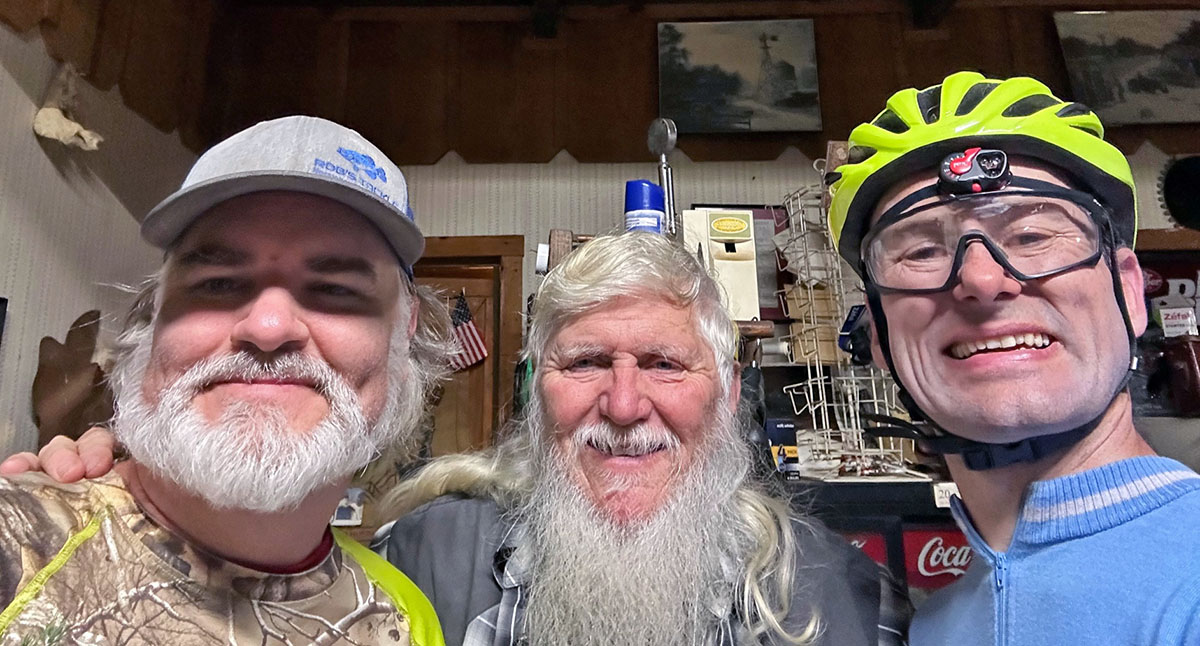AR High Country: Going Slower to Finish Faster
When I entered the Arkansas High Country Race last year, it was just the right mix of fun and hard to create lasting memories. Winning the South Loop and setting the FKT on that course was nice, too. It was almost a foregone conclusion that I’d return. Partially to experience it again, and partially to try and improve on my result. In 2022, I lost the power pack that recharged my GPS when it slipped out of my bag on a particularly bumpy section. Only the gallant sporting gesture of third-place finisher Jim Phillips got me going again: He had a spare that he loaned me!
This year, my goal was first and foremost to finish. On this challenging course with its huge climbs and steep descents littered with football-sized rocks, it’s not a given that bike and rider will last the distance. I also hoped to improve on last year’s time. And my dream was to come in under 45 hours. (Last year’s FKT was 46:59 hours.) And, of course, I wanted to have fun!
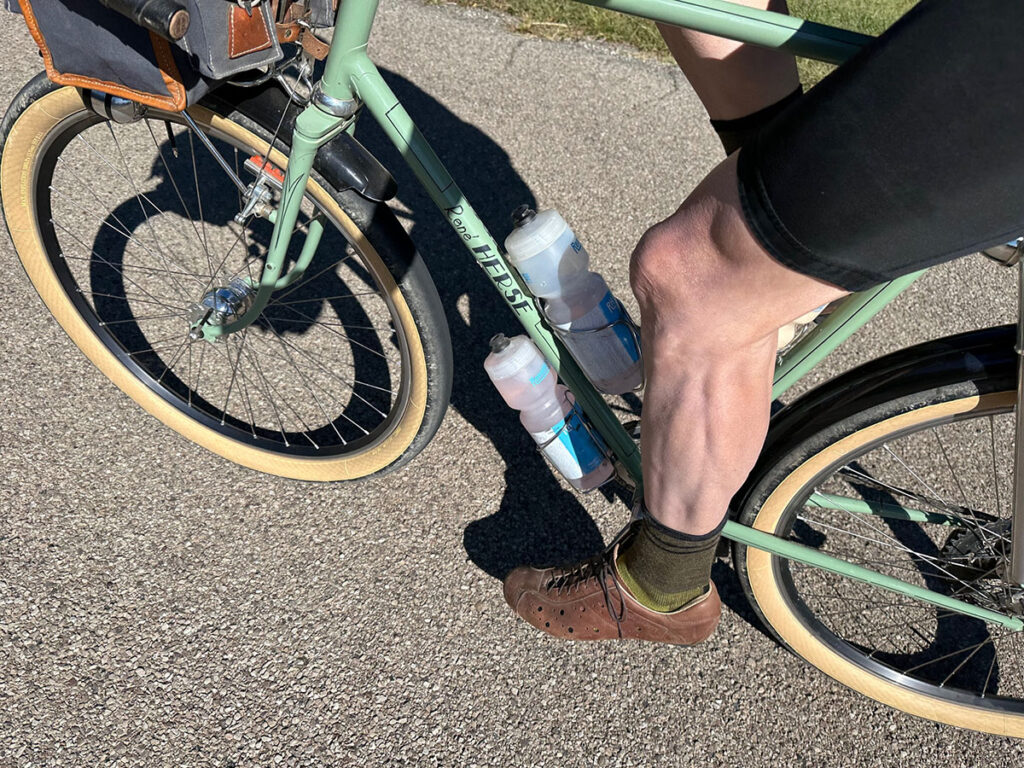
I rode the same bike as last year, the Rene Herse we built for Mark to ride in Unbound XL. Made from Kaisei × Rene Herse Superlight tubing, the frame is, well, superlight and gets in sync with my pedal strokes. The fork is made from specially-made round Kaisei TOEI Special blades that offer just enough shock absorption to take the edge of bumpy gravel, improving comfort and speed. Beyond that, it’s pretty standard: Rat Trap Pass Extralight tires, Rene Herse cantilever brakes, Rene Herse One-By cranks, SON generator lighting, and SRAM XPLR shifting. Oh, and aero tire fairings that we developed in the wind tunnel based on what Moto GP bikes use.
I recently talked to a car racer about these events. “I’m always nervous before the start,” I confessed. After all, I’m taking what’s essentially a road bike on such a punishing course. He reassured me that everybody is nervous before a big event: “If you aren’t nervous, it probably means you aren’t serious.”
All the nervousness was gone as soon as we were rolling out of Hot Springs behind a police car on empty early-morning streets. The pace was high, there were a number of riders clearly trying to set a fast time this year. Despite the brisk pace, this was a joyous time of pleasant banter. The sun was shining, the roads were still smooth, and the world was good. (And, boy, did my bike and body look clean in the selfie photo above!)
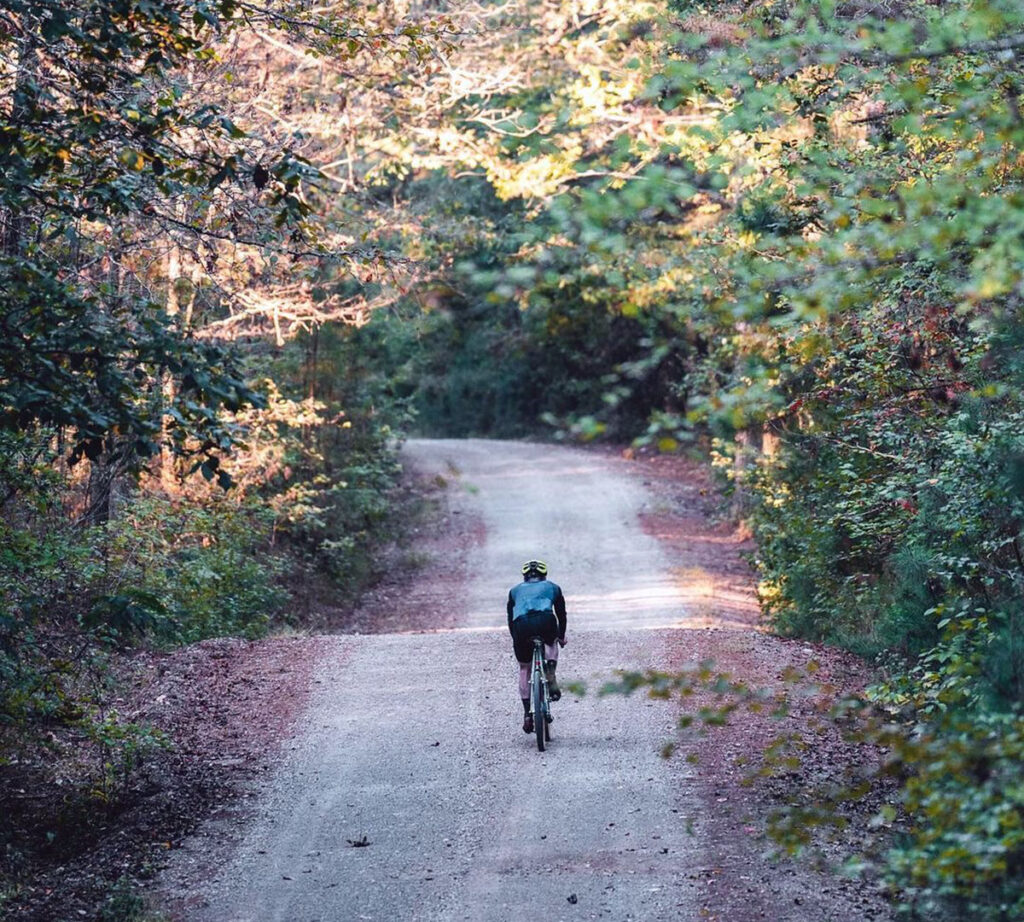
After a couple of hours, it was time to let the fastest riders go. I was doing my own ride with my own goals. This year, I decided to ride slower on the ‘easy’ sections to gain time on the really hard ones. Last year, I arrived at the steepest hills with tired legs, having pushed the pace on the flats. Physics says that I’d gain a lot of time if I put my effort into the steepest parts of the course. On the flatter sections, wind resistance means that a big increase in effort results only in a small increase in speed. I hoped that calculation was correct.
Every rider hopes for a ‘perfect’ race, where everything goes to plan. But bikepacking races are long, and there are so many things that can go wrong. I realized that my GPS wasn’t charging from the backup power pack. Turns out Wahoo GPS don’t charge with all cables. Mine had been fine in Paris-Brest-Paris, but it stopped working at the worst-possible time! I decided to save the GPS battery for the places with the most turns, and I navigated with my phone for a while. Not ideal, but fortunately the Dollar General store in Hatfield had a charger that came with a USB-C cable. And this one worked!
I enjoyed the hospitality at the famous Rich Mountain Store—photo at the top—that was closed last year, because the owners had Covid. This year, my brief stop was a welcome break during the cold night. A few hours later, I came upon the same mysterious table with drinks that had saved my ride last year. (I was out of water with the next supply about 10 hours away.) This year, Jake and Albert were there, with a roaring fire andeven more supplies. Reinvigorated by the brief rest, pizza and encouragement—plus the slightly slower pace—the formidable challenge Poteau Mountain was dispatched much more easily.
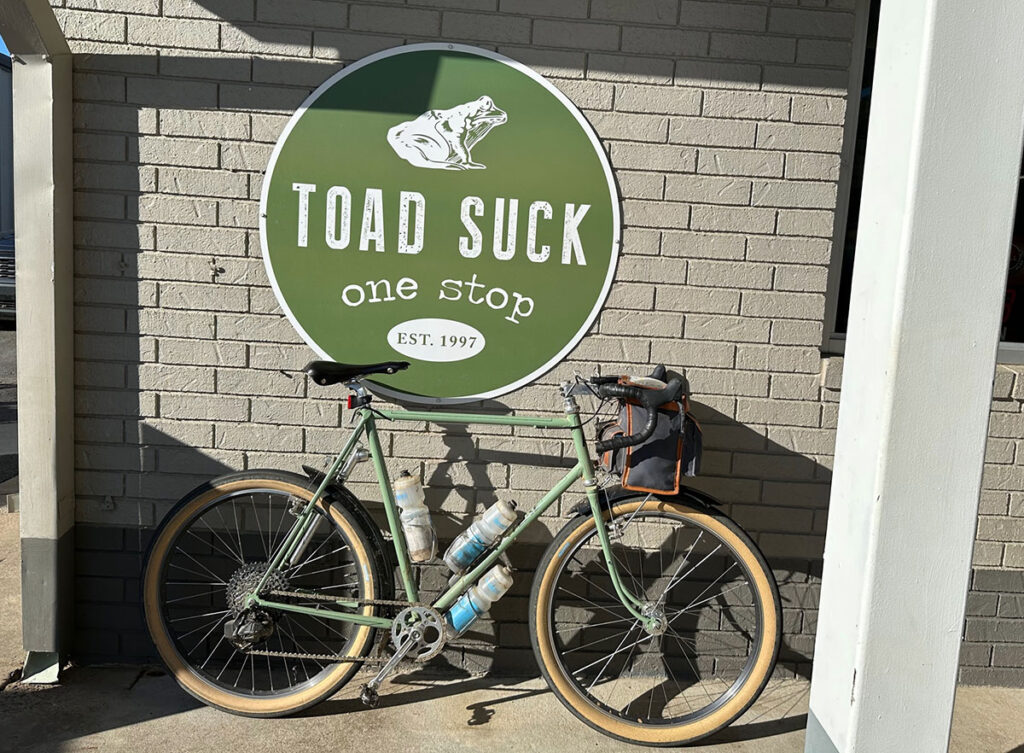
From there, I settled into a good long-distance pace. I twisted my knee when my bike bucked on a very bumpy descent. I had to soft-pedal for a while, but then bought some Tylenol, and that worked wonders. Bike and rider were getting dusty, but none the worse for wear. Once again, I really enjoyed the very hilly and rough section toward the finish. Things had been going well, but I was still surprised when I made my ‘dream’ goal and arrived in Hot Springs after 44 hours and 39 minutes on the road. That’s 2:20 hours faster than last year.
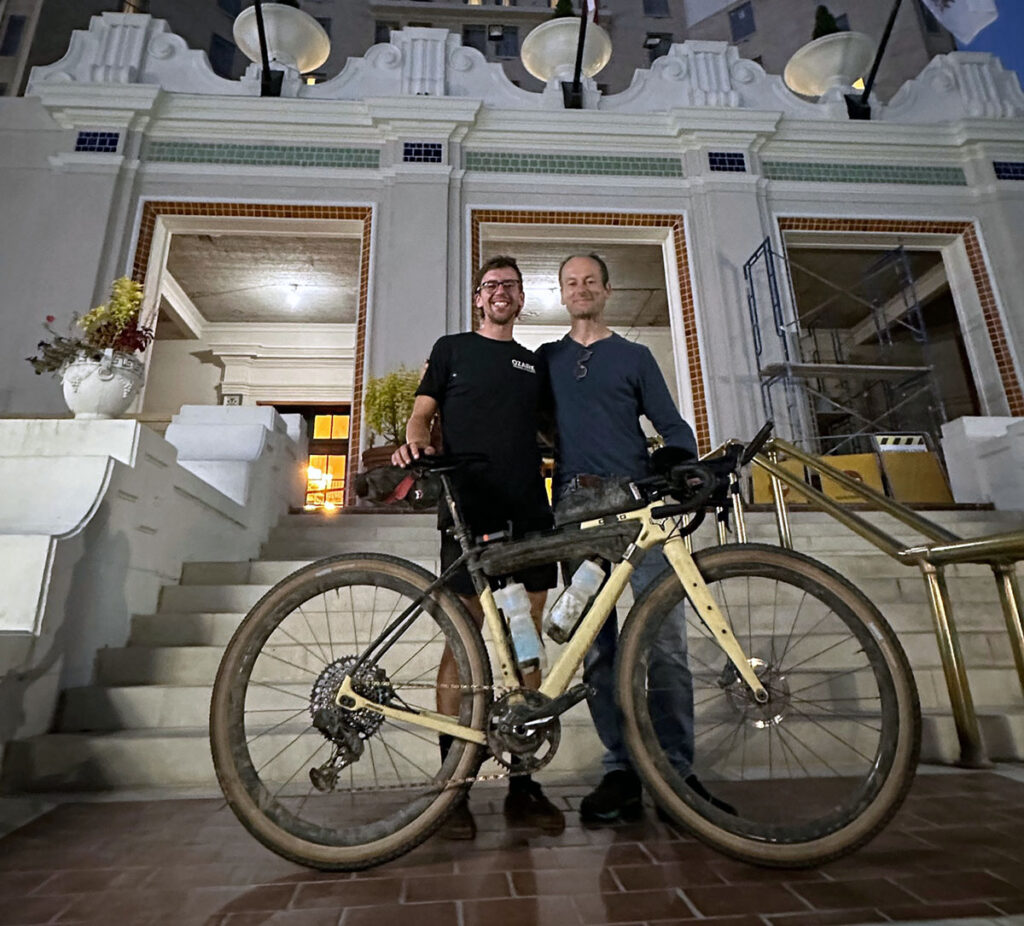
However, I didn’t win this year. Andrew Onermaa, who organized the race in the past, came to race it this year. He finished in a barely believable 39:24 hours. What amazed me most is how light he traveled. It’s clear that he can ride with the world’s best riders in events like these. And just so you don’t have to enlarge the photo to see what tires he ran, here’s the intel: 700C x 55 Fleecer Ridge Endurance. He finds them perfect for the rough roads of Arkansas.
Bryan Dougherty got ahead of me during a brief off-course excursion. (Another thing I’m learning: Prepare your own GPS track for these races. The track provided by the organizers only serves to show you where to go, but isn’t always ideal for navigation during the ride.) I saw Bryan in the distance for a while, and hoped to catch him in the hills toward the finish. He was stronger and kept his stops even shorter. Bryan is a tough guy: He raced on comparatively narrow 700×42 Hurricane Ridge tires (Endurance casing). Well done!
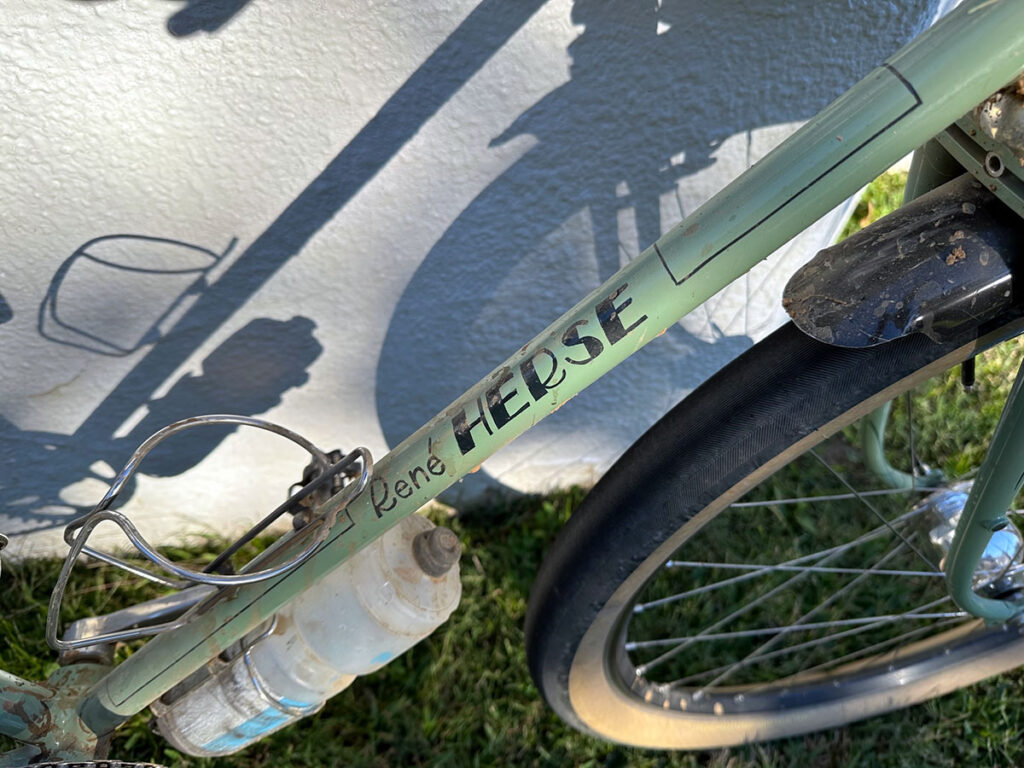
How did my bike work on this rough course? I love this bike, and it hurt my soul when I heard big stones ping off the thinwall tubes during fast descents. And when the bike got airborne on the rough gravel, with rocks bouncing off the rims. This ride definitely falls into the ‘Don’t do this at home, kids!’ category. And yet the bike survived the challenge unscathed. Only the burnt edges of the brake pads show how hard it was worked… And the front wheel could use a little truing. After riding Unbound XL, last year’s High Country Race, the Dark Divide 300 and this year’s race, that’s forgivable. It still clears the brake pads with lots of room to spare—a few twists with a spoke wrench will make it as good as new.
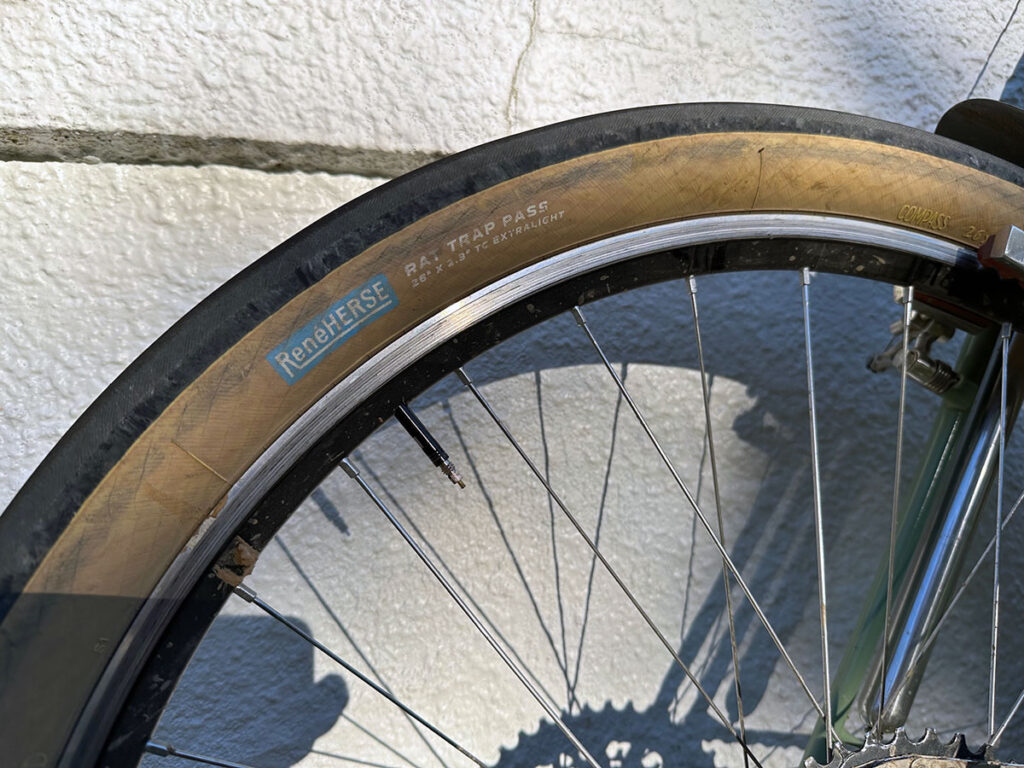
Riding Extralight tires through the wilds of Arkansas is definitely pushing their limits, but I had no flats or other tire issues. The rear tire shows the traces of many rocks that scraped along its sidewalls, but a combination of low tire pressure, picking good lines, and a little luck, kept them rolling without fail. I did bring tire boots to fix a sidewall cut, which is always a very real possibility in this terrain—on any tire.
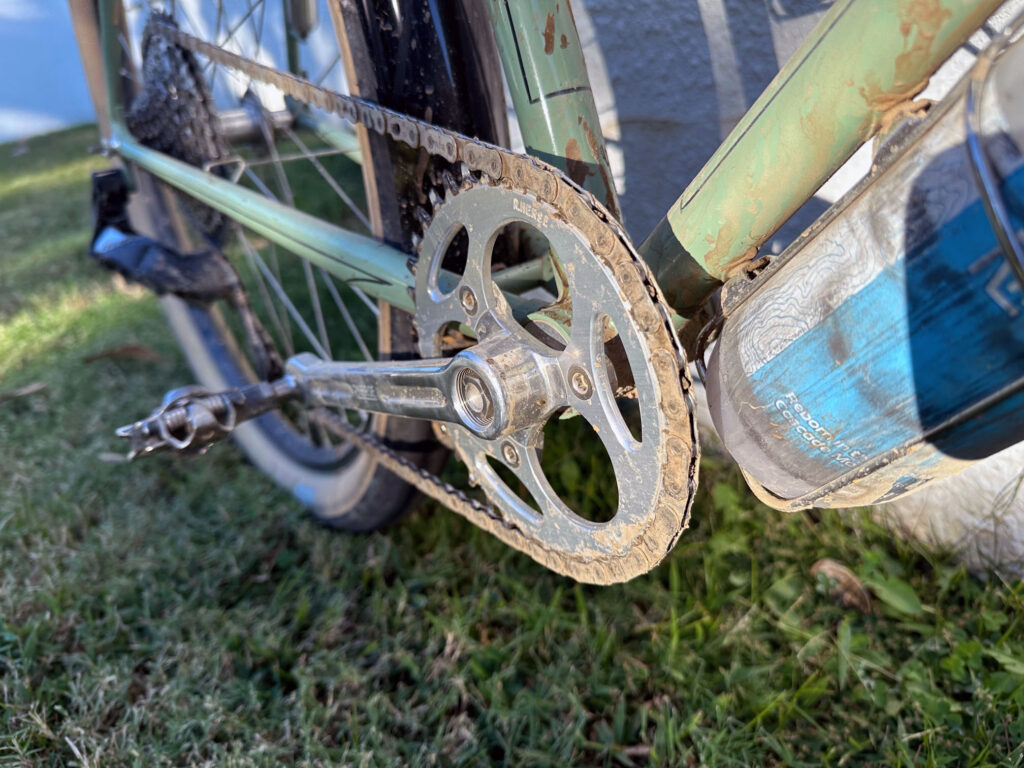
Once again, I was glad to have a One-By with SRAM’s excellent XPLR shifting. I love the Nivex derailleur for road rides—even if the roads are as rough as Unbound XL—but much of the course of the Arkansas High Country is really best described as mountain bike terrain. The constant shifts are easier with electronic shifting and no front shifts to break your rhythm. With so many shifts, it’s a real possibility to run out of battery, so I brought a spare. I didn’t need it this time.
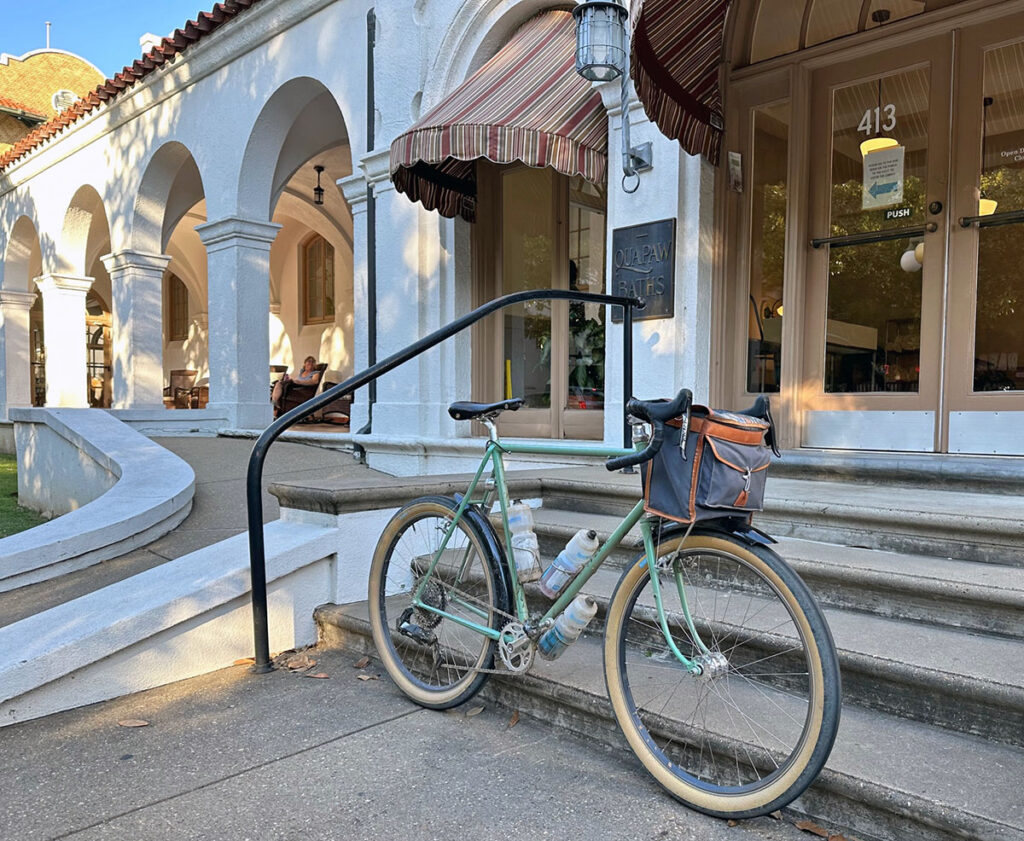
Most of all, it’s a brilliant idea to end a ride like this in a town famous for its hot baths. Soaking in the hot water after waking up from a nap did wonders for my tired legs, back, shoulders, neck—well, my entire body was tired! However, I learned one more thing: To get a massage, you need to book it before the start!
On the way back, a Bicycle Quarterly reader recognized me at the airport in Little Rock and asked: “Will you be back next year?” It’s too early to say, but the Arkansas High Country Race is one of those rare events that grip you and won’t let go. There’s so much beauty and so much challenge that it creates powerful memories. I’m glad I came again this year, and I’ll probably have another go in the future.
Many thanks to Andrew Onermaa for creating this race, and to Jackalope Cycling and Chuck Campbell for putting on this year’s edition.
A full story of the race will appear in a future edition of Bicycle Quarterly.
Photo credit: Kai Caddy (Photo 3).


